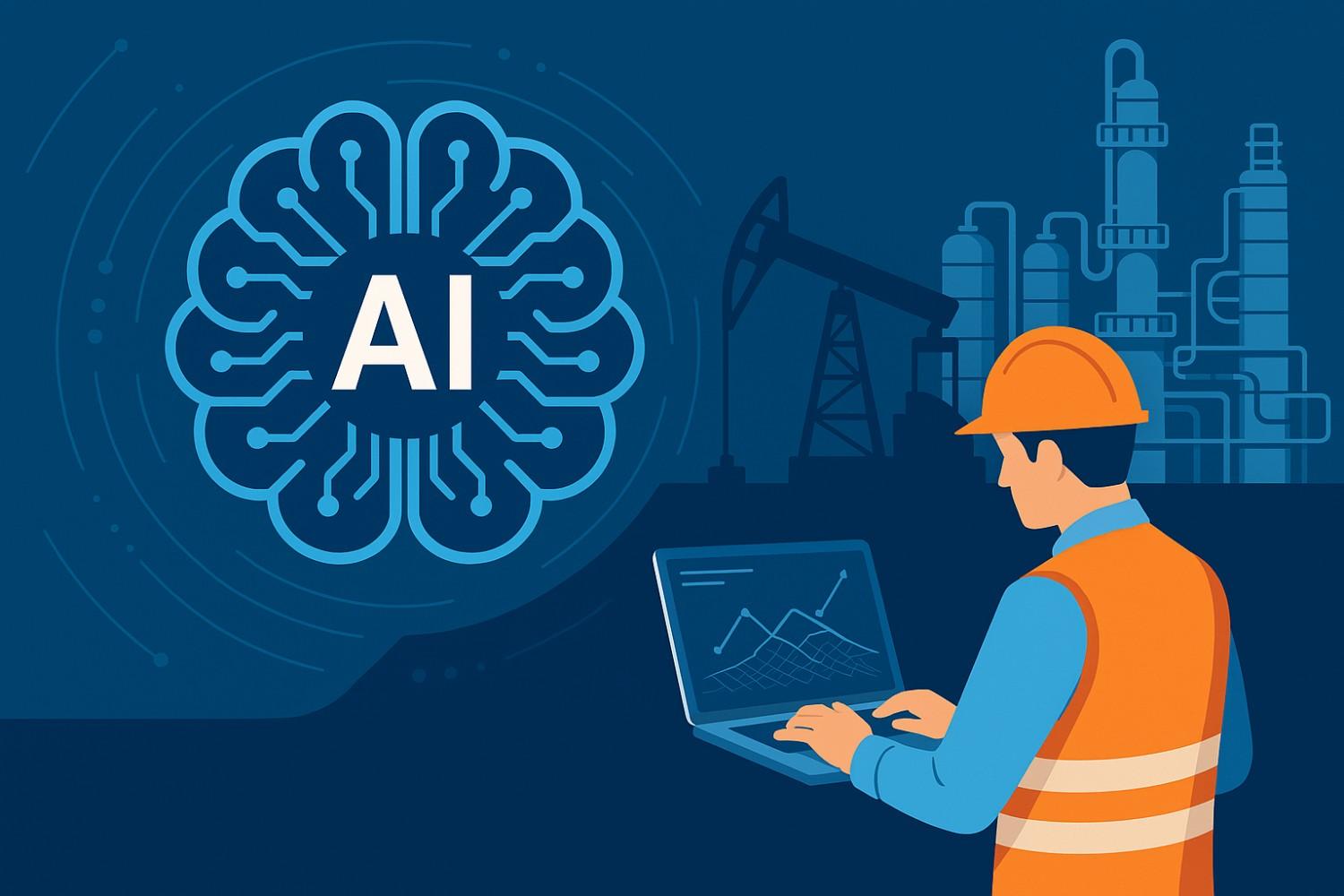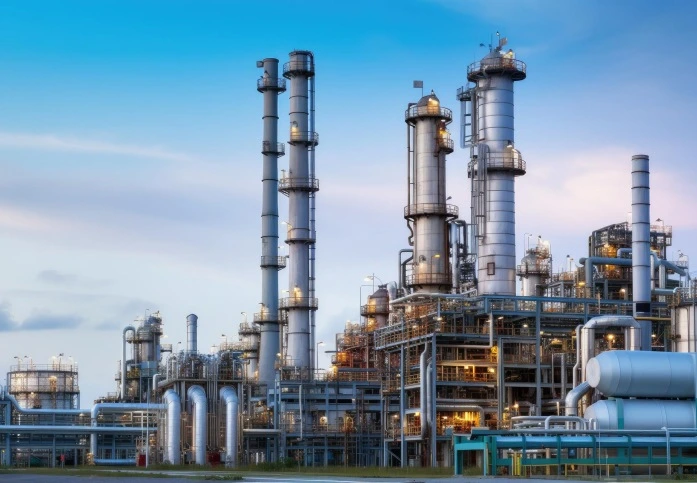Introduction to AI and Automation in Refining
In the refinery industry, decision-making depends heavily on accuracy, timing, and system stability. As energy companies look to reduce operational costs and emissions while improving throughput, artificial intelligence (AI) and automation are emerging as essential tools rather than optional upgrades. Their role is growing from initial pilot tests to full-scale refinery implementation, delivering consistent and measurable efficiency improvements.
Understanding AI and its Core Technologies in Refining
At its core, AI in refining integrates machine learning, computer vision, and data analytics into process control and asset optimization. The strength of AI in requirements engineering lies in mapping business objectives to practical technological capabilities. It’s not just about deploying algorithms but embedding them in systems that understand, adapt, and improve refinery operations.
AI systems learn from temperature, pressure, feed quality, and energy consumption patterns, offering predictive insights that were once impossible through manual analysis. These insights directly affect areas like equipment health monitoring, emissions tracking, and production balancing.
History and Evolution of AI in Industrial Engineering
The adoption of AI in industrial engineering didn’t happen overnight. Initial attempts were made using rule-based systems in control rooms for alarm handling. Over time, advances in computing power and the availability of process data pushed AI further up the value chain.
In recent years, refinery automation has benefited from scalable platforms and affordable sensors, shifting from simple monitoring tools to predictive and prescriptive systems. Now, AI solutions don’t just suggest actions; they enable autonomous decision-making, supported by models built on sound AI in requirements engineering.
A great example of AI evolution in industrial engineering is predictive maintenance in oil refineries. Initially, refineries relied on rule-based systems to handle equipment alarms, requiring manual intervention to diagnose and fix issues. As computing power increased and process data became more accessible, machine learning models started predicting equipment failures before they happened.
For instance, a refinery company has implemented AI-driven predictive maintenance systems that analyze sensor data from pumps, compressors, and turbines to detect early signs of wear and potential breakdowns. This shift from reactive to predictive and prescriptive maintenance has significantly reduced downtime and maintenance costs, improving overall refinery efficiency.
Today, AI models in refineries don’t just flag potential failures; they autonomously adjust operating parameters to optimize performance, ensuring safe and efficient industrial operations.
AI and Process Optimization in Refineries
Process optimization is a critical focus for energy companies, and AI plays a vital role. Real-time data inputs help adjust process variables like heat integration, catalyst activity, and flow distribution. This results in improved yields, reduced energy waste, and longer uptime between maintenance shutdowns.
At Ingenero, solutions built on AI in requirements engineering focus on linking real operational constraints to process control logic. This ensures that optimization isn’t just mathematically efficient; it’s technically sound and feasible at scale.
Robotics and Automation in Refinery Operations
Robotics and autonomous systems support routine and high-risk tasks, particularly inspection, sampling, and material handling. Combined with refinery automation, these systems reduce the need for human exposure in hazardous zones.
Examples include automated guided vehicles for catalyst handling or drones for flare stack inspection. These tools coordinate with AI systems, enabling faster diagnostics and decision-making that aligns with engineered safety margins.
Some programs are modeled on initiatives like those from the refinery automation institute, emphasizing structured frameworks and industry benchmarks in deploying robotics.
AI’s Impact on Refinery Safety and Efficiency
Safety and efficiency are no longer separate goals; both are improved through accurate data modeling and fast response times. AI supports risk-based inspection planning, failure prediction, and energy audits, helping operators anticipate and prevent incidents.
AI in requirements engineering ensures that safety logic is not compromised in automation. Models are tested against historical failure data and validated through redundancy checks. This layered safety integration allows AI to augment human decision-making without increasing operational risk.
At scale, this results in measurable improvements such as quicker emergency response times, enhanced product quality consistency, and effective emissions control, key factors for modern refining operations.
The Role of AI in Professional Development and Workforce Transformation
With automation handling repetitive tasks, the human role in refineries is evolving. Engineers now oversee algorithmic performance, validate model outcomes, and focus on strategic planning. This shift requires new skill sets such as data literacy, control theory integration, and model validation.
Training aligned with programs from the refinery automation institute and internal AI labs helps bridge this gap. Companies are investing in reskilling initiatives to ensure their teams can collaborate with intelligent systems.
Meanwhile, AI in requirements engineering also includes human factor integration, ensuring systems are designed with users in mind, not just machines.
AI Implementation Strategies in Refinery Engineering
Implementing AI in refineries requires more than plugging in software. The right strategy involves three pillars:
- Data Quality and Infrastructure: Robust sensors, validated historical data, and reliable connectivity.
- Model Integration with Control Logic: AI must align with process safety rules, control system behavior, and regulatory compliance.
- Organizational Readiness: From leadership buy-in to team capability building.
Successful implementations also involve small-scale pilots before wider deployment. This helps test the model against plant-specific constraints. Ingenero applies AI in requirements engineering at the early stage of each project, ensuring every solution meets technical and operational requirements from day one.
Driving Profitability and Sustainability with AI
From reducing unplanned downtime to improving product consistency, AI supports key performance indicators that matter to operations and finance alike.
Sustainability also benefits. AI-powered optimization reduces fuel usage, slashes emissions, and enhances heat recovery. When guided by strong AI in requirements engineering, these outcomes are consistent and scalable.
For companies aligned with ESG goals, this shift is not optional. AI enables smarter energy use, better reporting accuracy, and stronger compliance with environmental standards, all without affecting throughput.
The Future of AI and Automation in Refining
The next wave of transformation will combine AI with cloud computing, edge analytics, and cross-asset integration. We’ll see more autonomous operations, adaptive scheduling, and intelligent maintenance systems that learn continuously.
Companies investing in strong data architecture and structured AI in requirements engineering will have a clear advantage. As industry regulations tighten and margins shrink, agility in technology adoption becomes a key differentiator.Initiatives similar to those from Ingenero are already guiding the direction. Open standards, collaboration between OEMs and software providers, and unified control systems will define the future of refinery automation.
Conclusion
AI and automation are reshaping process engineering in refineries. With the right approach, grounded in strong AI in requirements engineering and supported by practical implementation frameworks, operators can unlock better performance, safer operations, and measurable business value.
The focus must now be on aligning technical innovation with strategic goals to stay competitive in an industry that’s rapidly moving forward.


